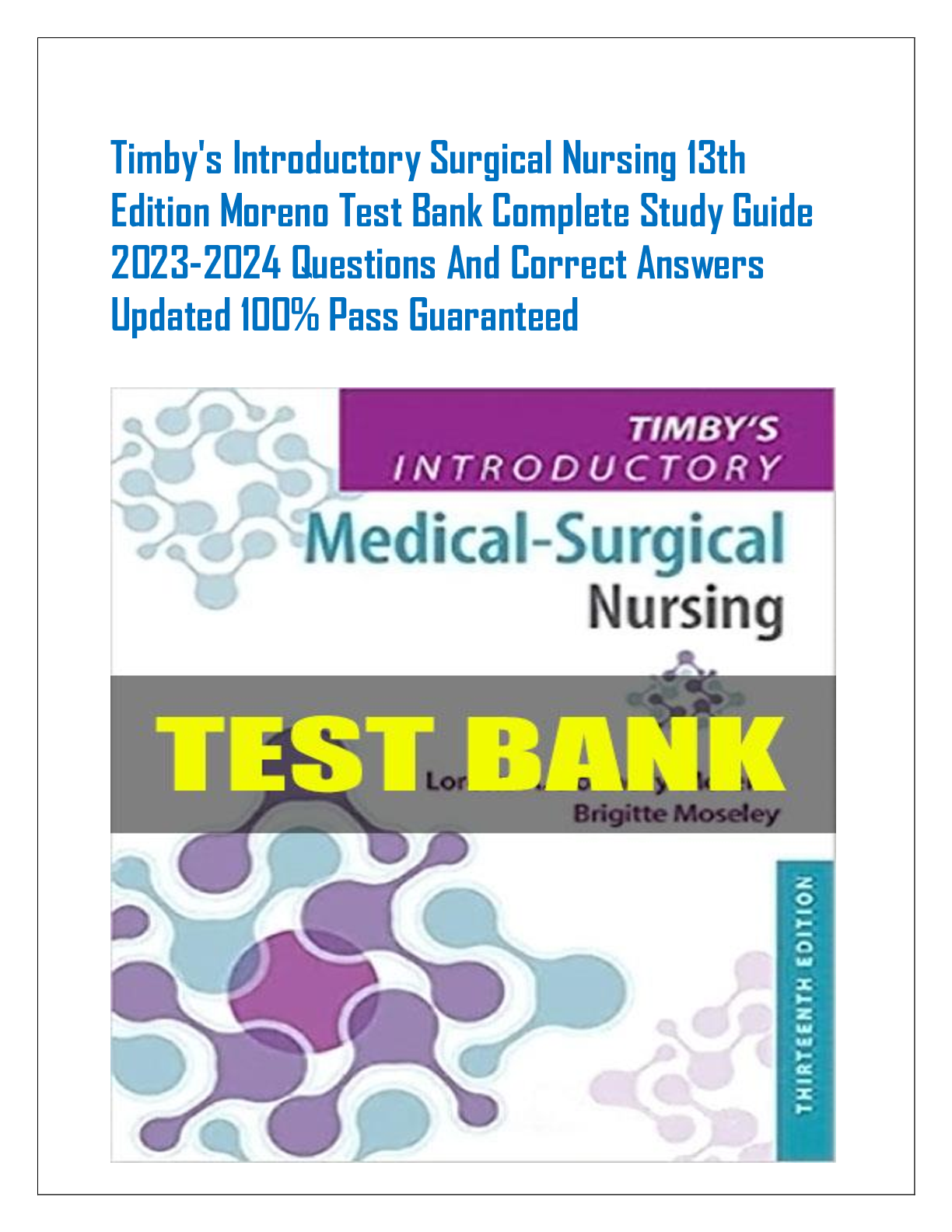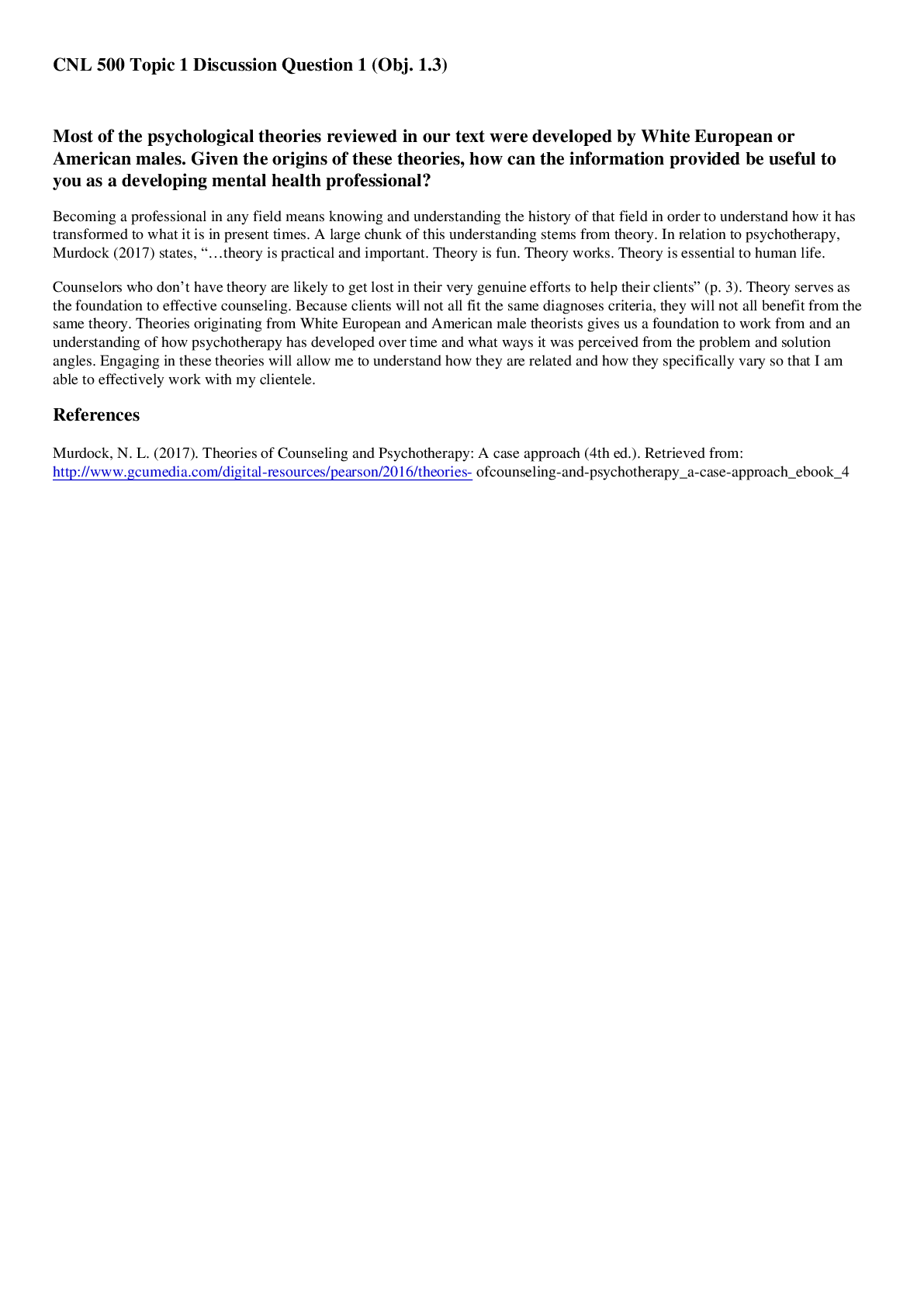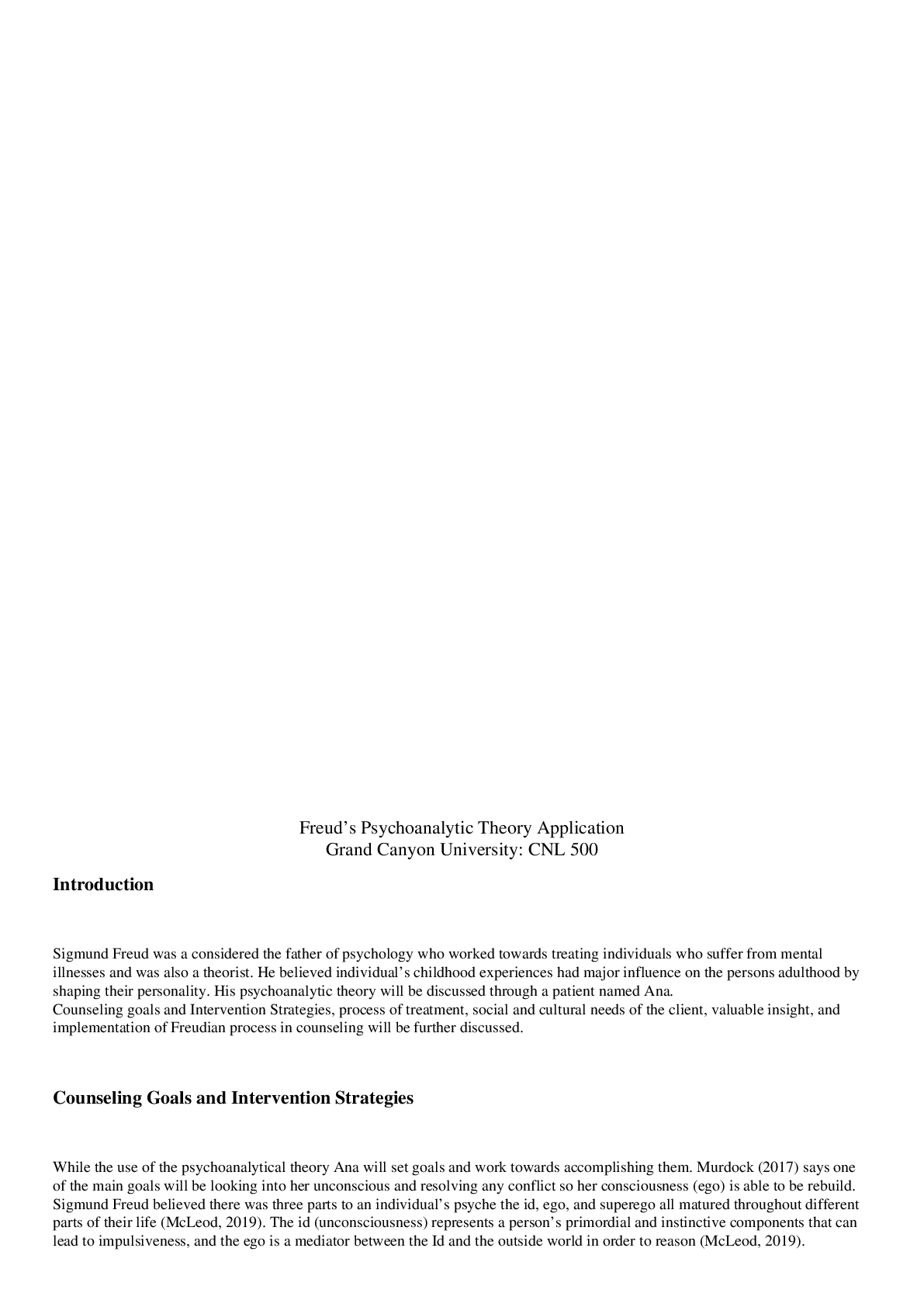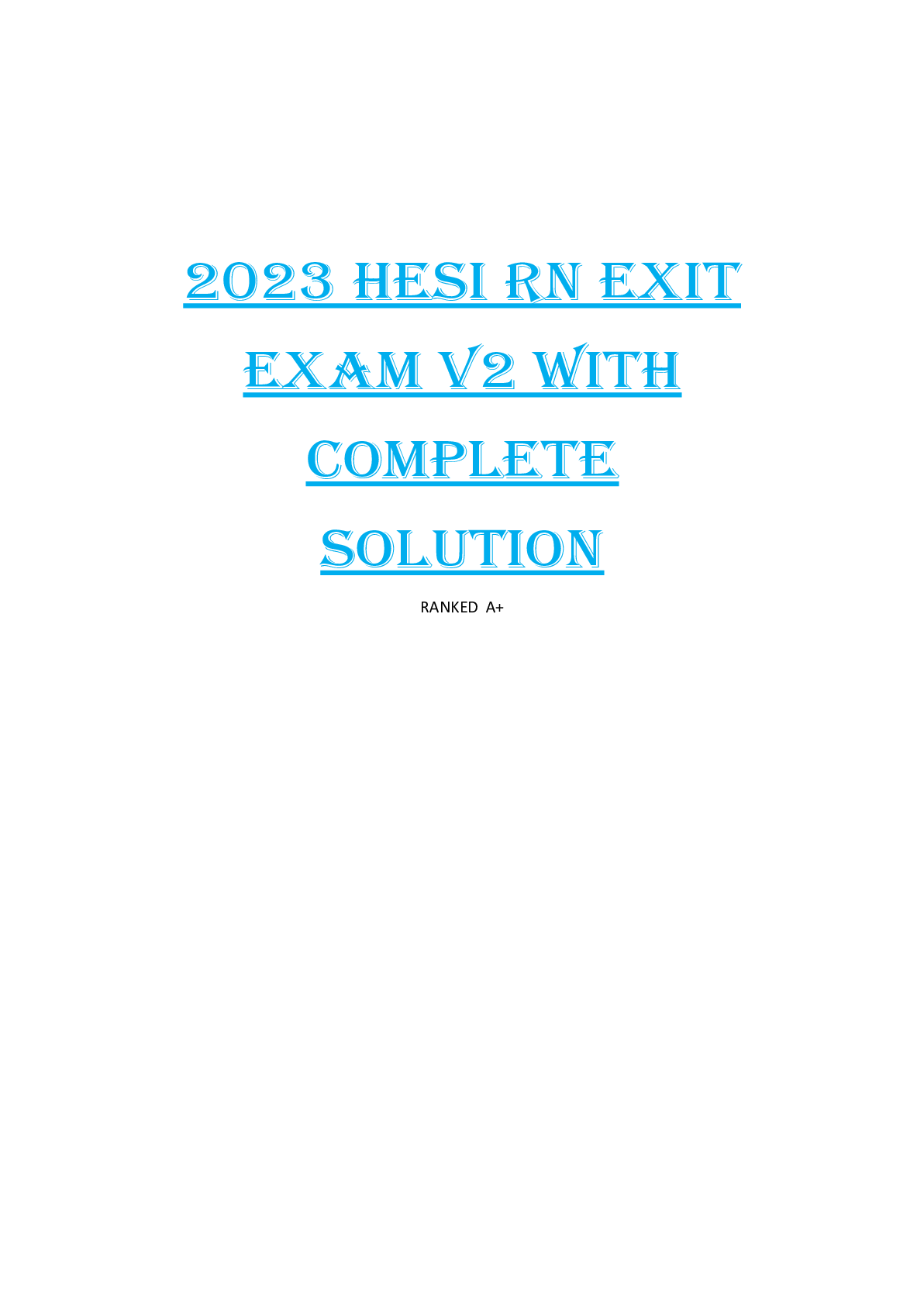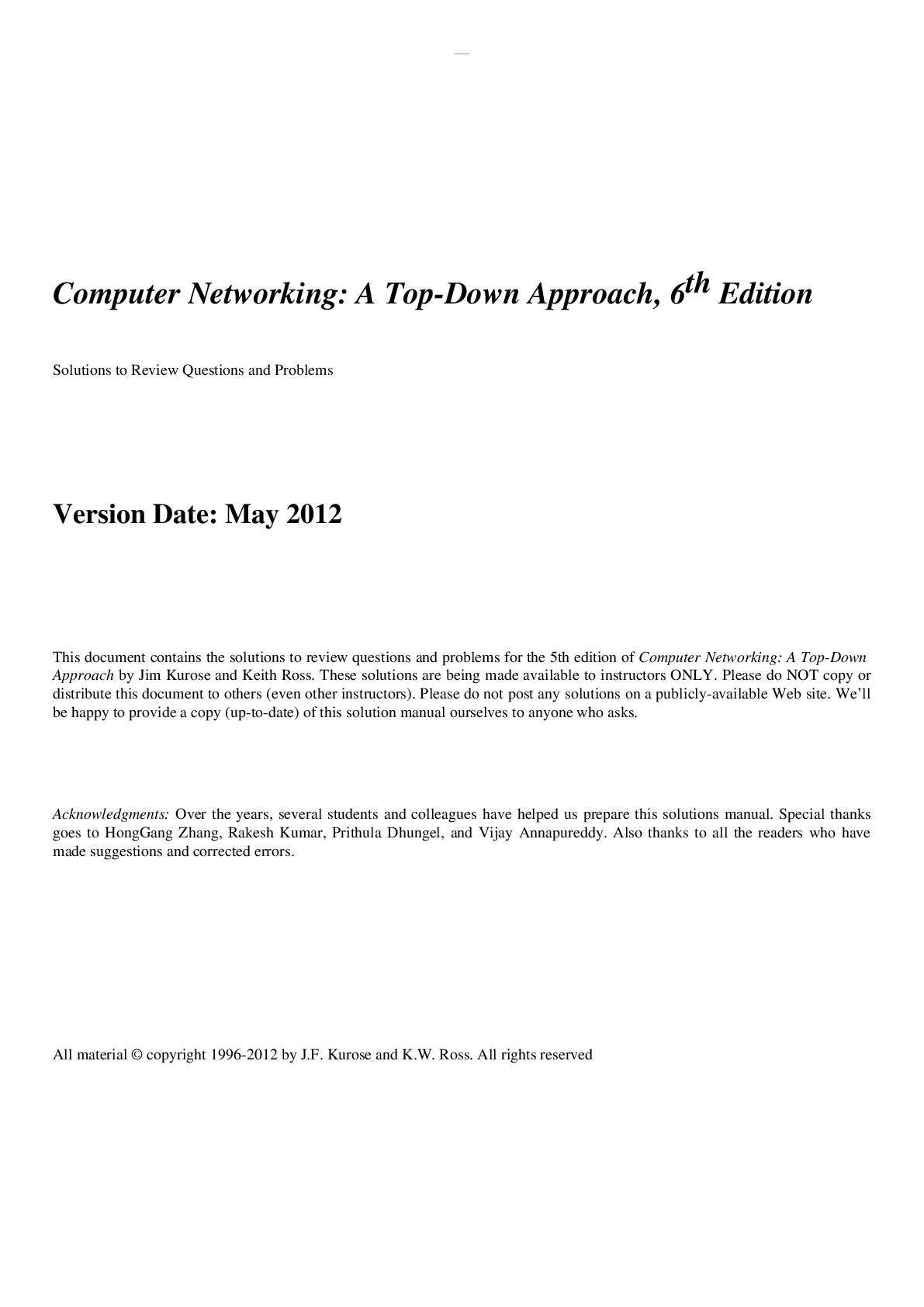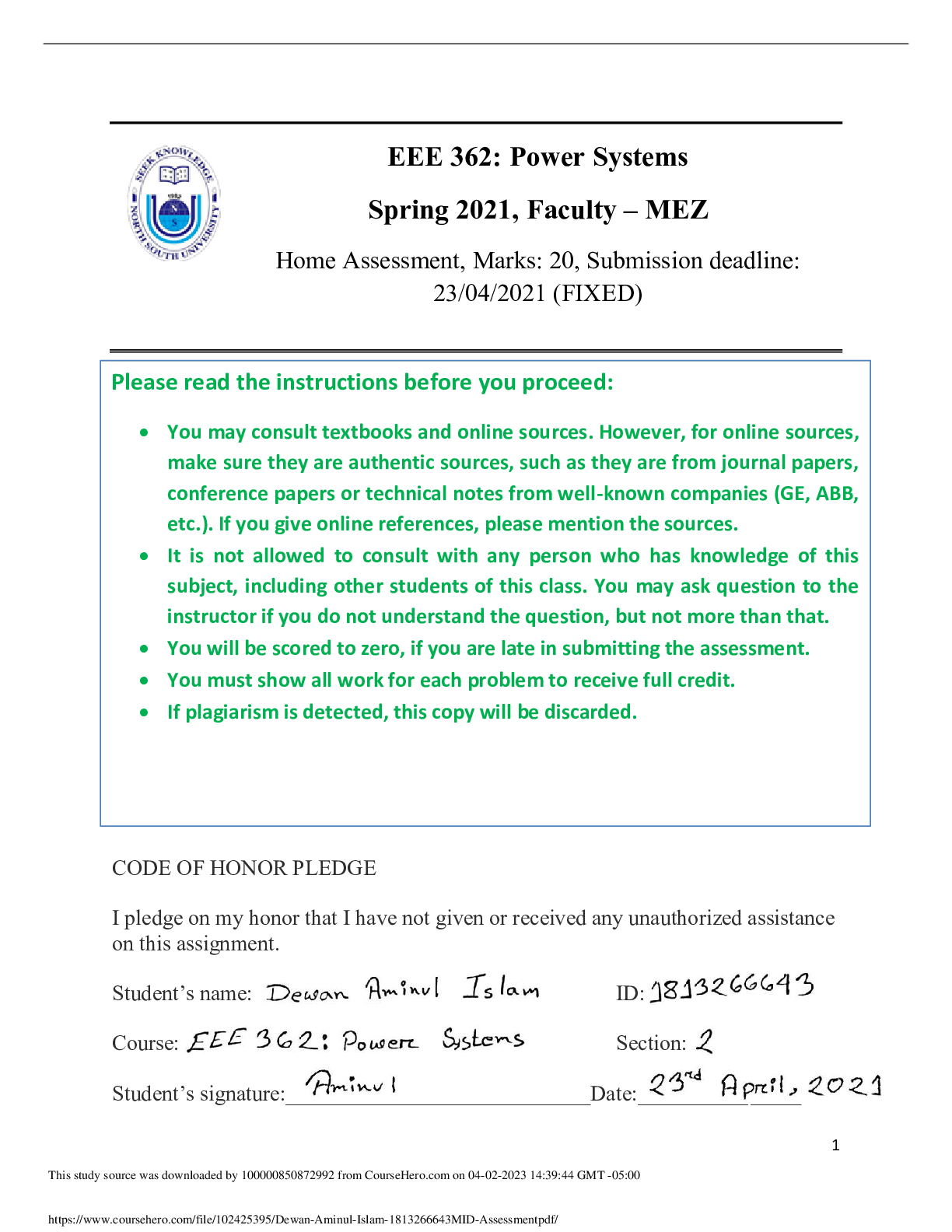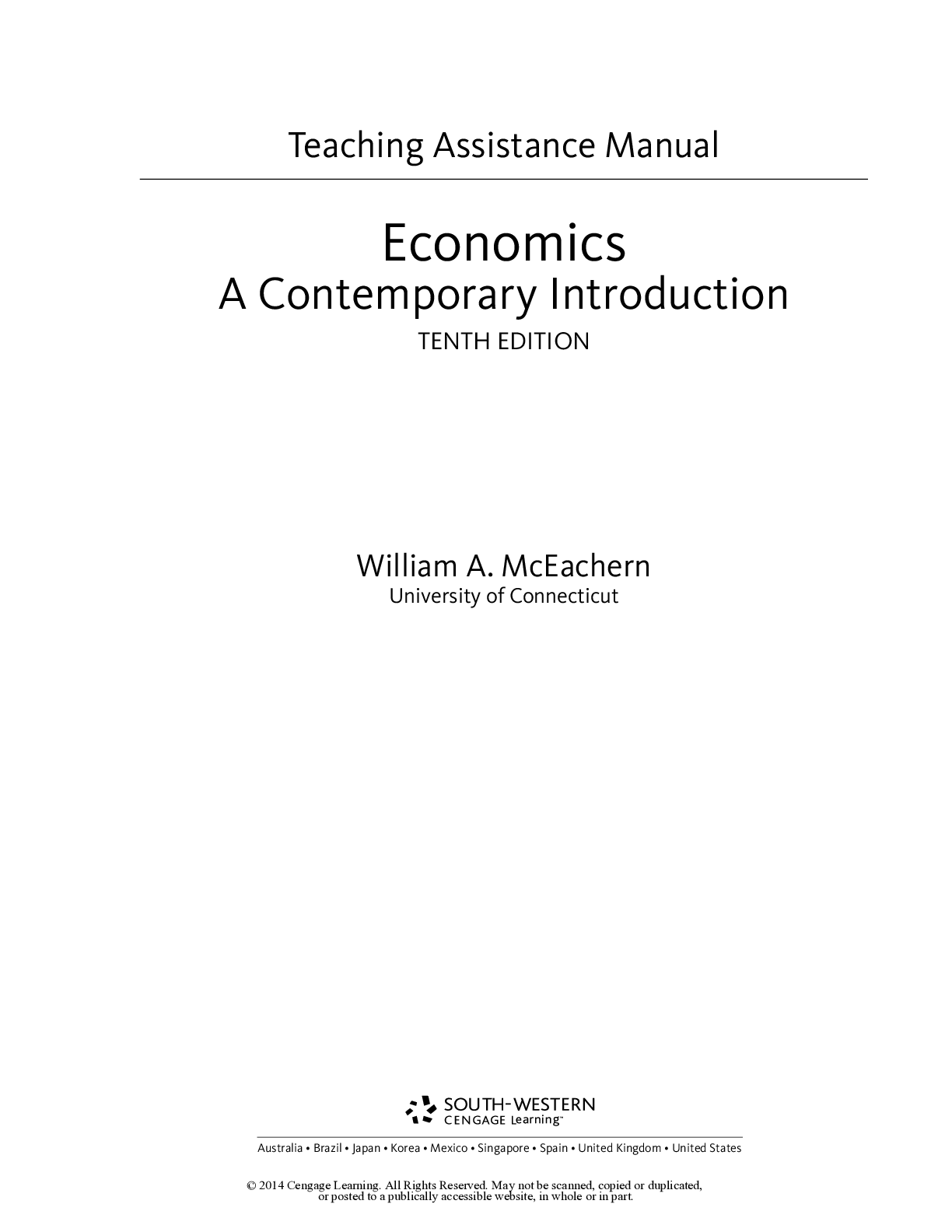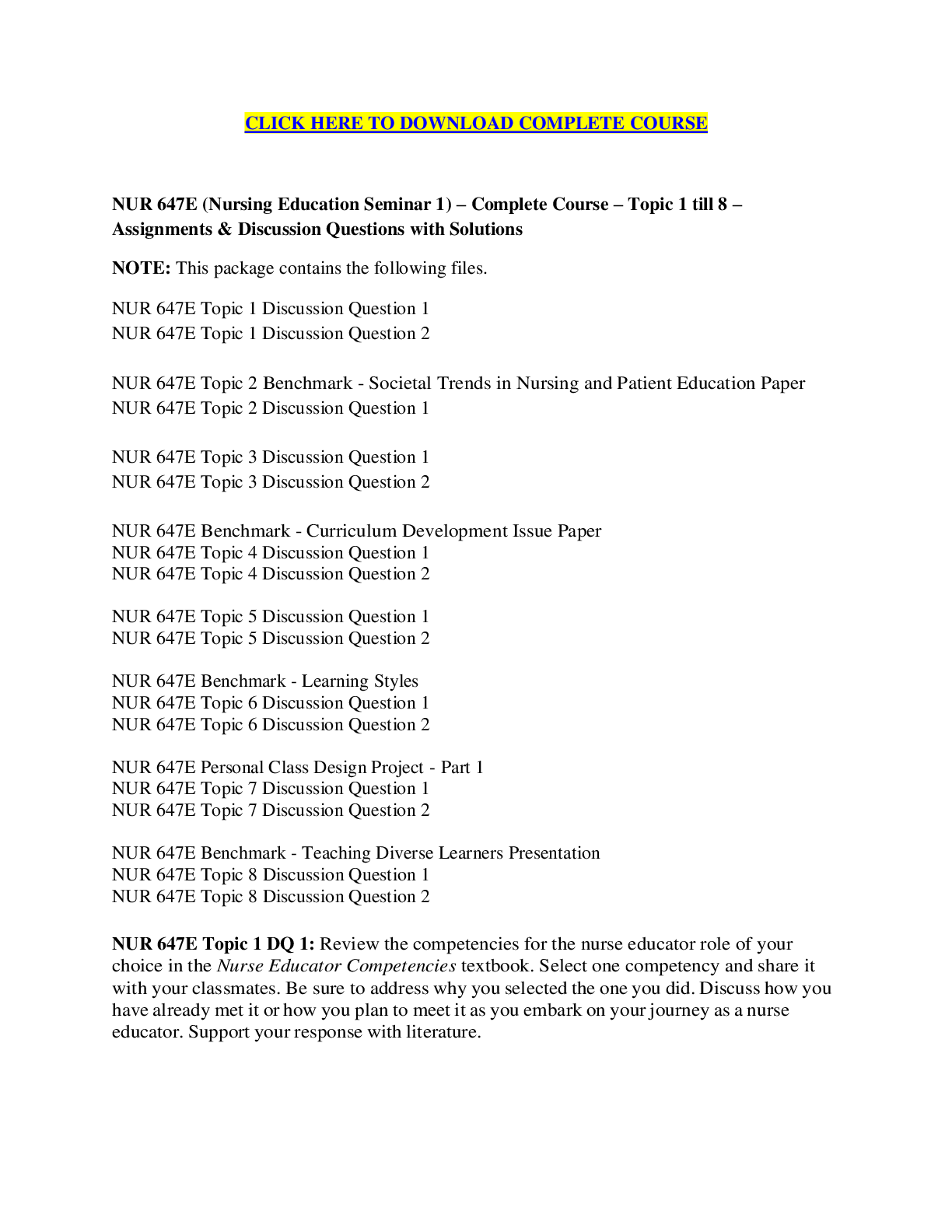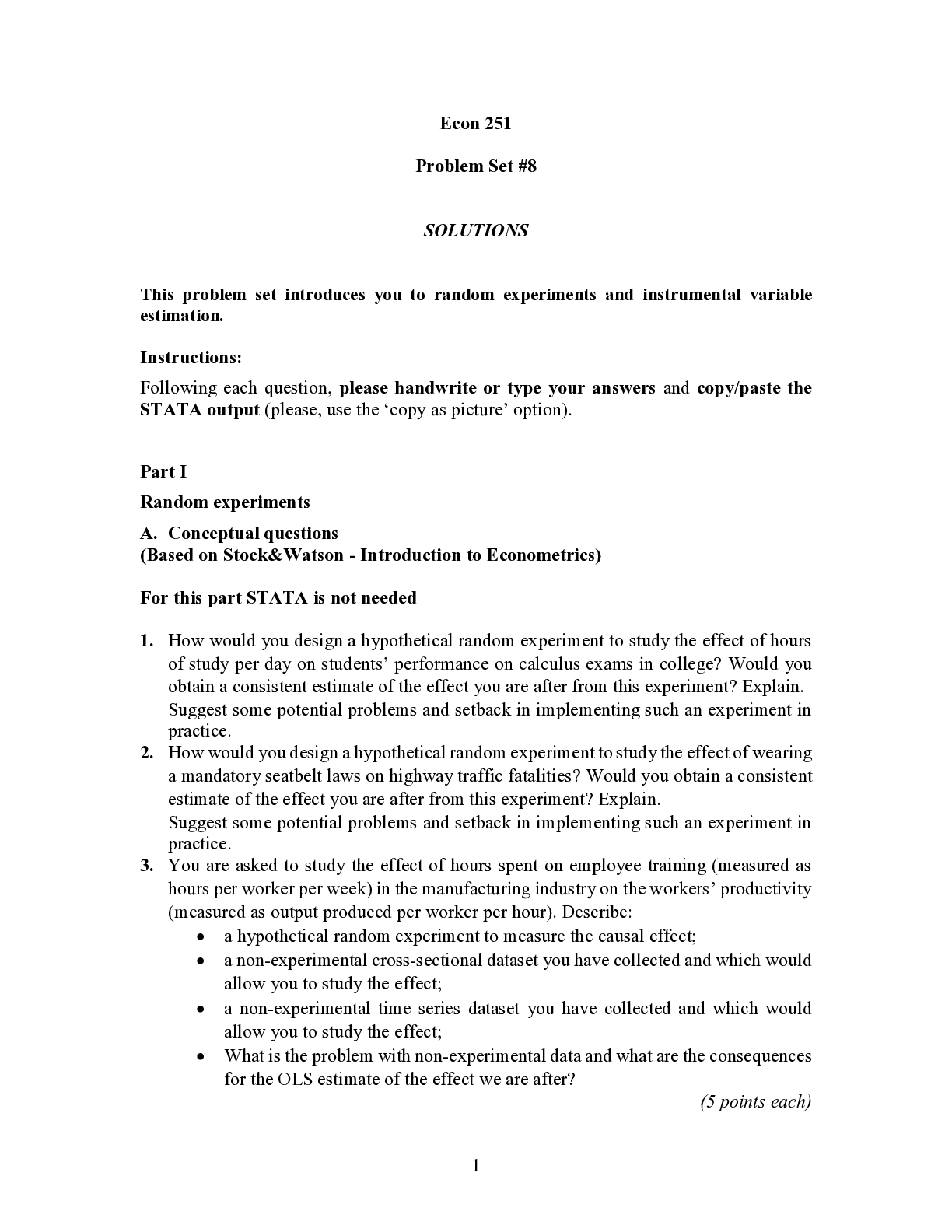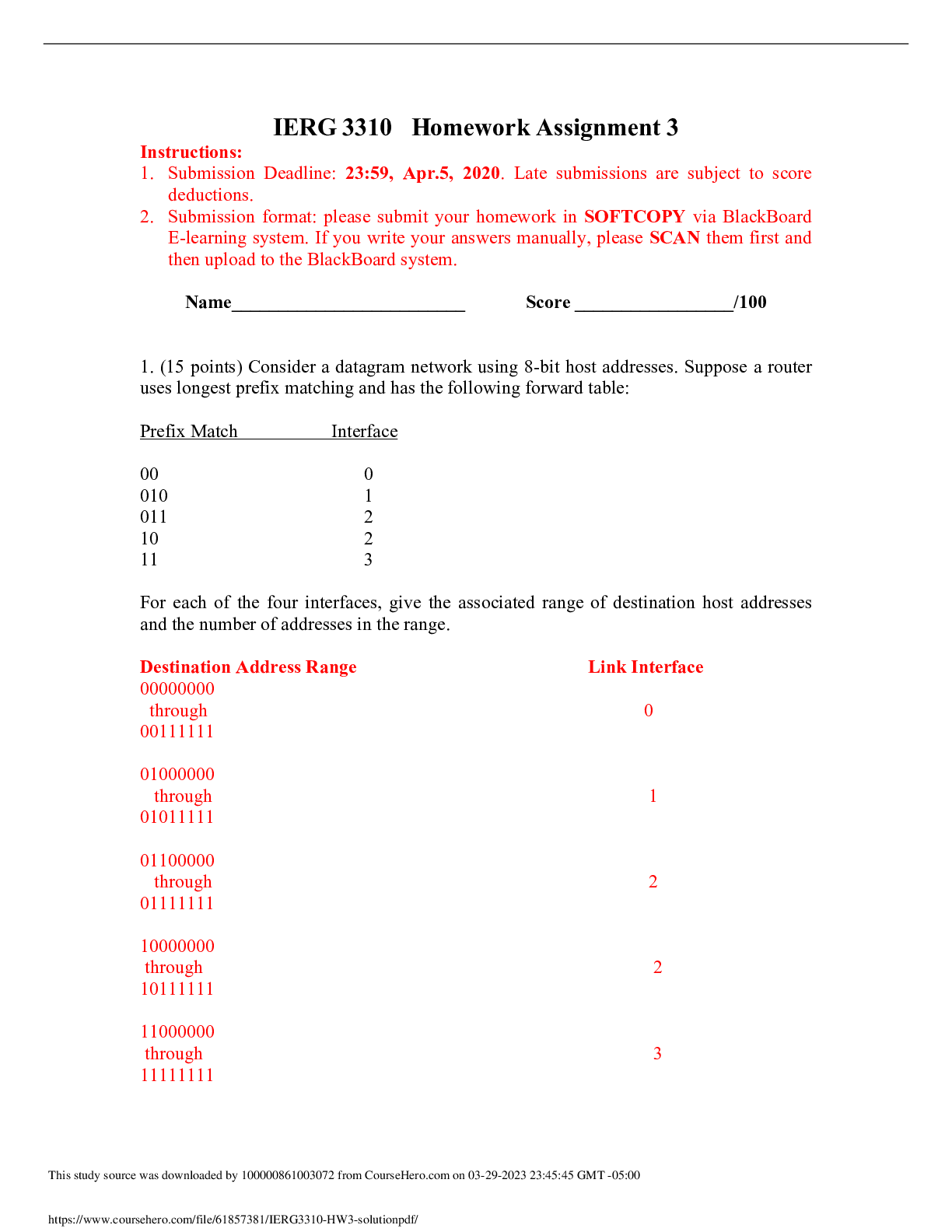*NURSING > SOLUTIONS > Timby's Introductory Surgical Nursing 13th Edition Moreno Test Bank Complete Study Guide 2023-2024 Q (All)
Timby's Introductory Surgical Nursing 13th Edition Moreno Test Bank Complete Study Guide 2023-2024 Questions And Correct Answers Updated 100% Pass Guaranteed
Document Content and Description Below
1. A new nurse is working with a preceptor on an inpatient medical-surgical unit. The preceptor advises the student that which is the priority when working as a professional nurse? ◦ Attending to... holistic client needs ◦ Ensuring client safety ◦ Not making medication errors Providing client- focused care ANS: B ◦ All actions are appropriate for the professional nurse. However, ensuring client safety is the priority. Up to 98,000 deaths result each year from errors in hospital care, according to the 2000 Institute of Medicine report. Many more clients have suffered injuries and less serious outcomes. Every nurse has the responsibility to guard the clients safety. ◦ DIF: Understanding/Comprehension REF: 2 KEY: Patient safety MSC: Integrated Process: Nursing Process: Intervention ◦ NOT: Client Needs Category: Safe and Effective Care Environment: Safety and Infection Control 2. A nurse is orienting a new client and family to the inpatient unit. What information does the nurse provide to help the client promote his or her own safety? ◦ Encourage the client and family to be active partners. ◦ Have the client monitor hand hygiene in caregivers. ◦ Offer the family the opportunity to stay with the client. ◦ Tell the client to always wear his or her armband. ANS: A ◦ Each action could be important for the client or family to perform. However, encouraging the client to be active in his or her health care as a partner is the most critical. The other actions are ◦ ◦ very limited in scope and do not provide the broad protection that being active and involved does. ◦ DIF: Understanding/Comprehension REF: 3 KEY: Patient safety MSC: Integrated Process: Teaching/ Learning ◦ NOT: Client Needs Category: Safe and Effective Care Environment: Safety and Infection Control 3. A nurse is caring for a postoperative client on the surgical unit. The clients blood pressure was 142/76 mm Hg 30 minutes ago, and now is 88/50 mm Hg. What action by the nurse is best? 4. Call the Rapid Response Team. 5. Document and continue to monitor. 6. Notify the primary care provider. 7. Repeat blood pressure measurement in 15 minutes. ANS: A a. The purpose of the Rapid Response Team (RRT) is to intervene when clients are deteriorating before they suffer either respiratory or cardiac arrest. Since theclient has manifested a significant change, the nurse should call the RRT. Changes in blood pressure, mental status, heart rate, and pain are particularly significant. Documentation is vital, but the nurse must do more than document. The primary care provider should be notified, but this is not the priority over calling the RRT. The clients blood pressure should be reassessed frequently, but the priority is getting the rapid care to the client. b. DIF: Applying/Application REF: 3 c. KEY: Rapid Response Team (RRT)|medical emergencies MSC: Integrated Process: Communication and Documentation d. NOT: Client Needs Category: Physiological Integrity: Physiological Adaptation ◦ 8. A nurse wishes to provide client-centered care in all interactions. Which action by the nurse best demonstrates this concept? 9. Assesses for cultural influences affecting health care 10. Ensures that all the clients basic needs are met 11. Tells the client and family about all upcoming tests 12. Thoroughly orients the client and family to the room ANS: A a. Competency in client-focused care is demonstrated when the nurse focuses on communication, culture, respect, compassion, client education, and empowerment. By assessing the effect of the ◦ b. clients culture on health care, this nurse is practicing client-focused care. Providing for basic needs does not demonstrate this competence. Simply telling the client about all upcoming tests is not providing empowering education. Orienting the client and family to the room is an important safety measure, but not directly related to demonstrating client-centered care. c. DIF: Understanding/Comprehension REF: 3 d. KEY: Patient-centered care| culture MSC:Integrated Process: Caring NOT: Client Needs Category: Psychosocial Integrity [Show More]
Last updated: 1 month ago
Preview 1 out of 345 pages

Reviews( 0 )
Document information
Connected school, study & course
About the document
Uploaded On
Mar 27, 2024
Number of pages
345
Written in
Additional information
This document has been written for:
Uploaded
Mar 27, 2024
Downloads
0
Views
7

